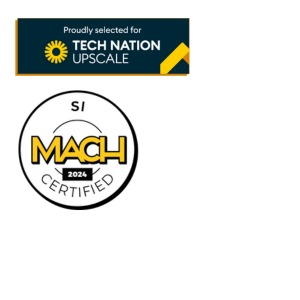In other words, the payment system for eCommerce incorporates into your company’s website as a payment medium. Customers need to gain more trust in the confidentiality of their private financial details. They are more likely to give up their online shopping carts when they are forcibly sent to a third-party website to complete a transaction.
Therefore, online payments should be quick and easy for every customer. Several activities occur in the background to ensure the customer’s money flows towards the merchant. One of the most common misunderstandings among entrepreneurs starting new eCommerce businesses is that payment processors and gateways are interchangeable. Such misunderstandings here are different.
A payment processor is an intermediate between the merchant, the merchant’s bank, and the issuing bank, further authorizing and managing all transactions. However, payment processors need to be updated as well as hardware, such as POS systems and terminals, in order to process transactions.

The flip side
In contrast, a payment gateway not only processes transactions but also handles the exchange of money between a business and its customers. As of 2025, the landscape of eCommerce features a variety of payment systems, each offering unique advantages and drawbacks. To understand the dynamics of online commerce, it’s essential to explore these payment systems in depth.
Top Payment Systems for 2025
We will delve into the types of online payment systems for eCommerce, examining their functionalities, security features, ease of integration, and customer experience. Additionally, we will assess the benefits these systems offer to businesses and consumers, such as enhanced transaction speed, improved security standards, and broader accessibility.
Understanding these aspects is crucial for businesses to choose the right eCommerce payment solutions that align with their operational
How to choose the best eCommerce payment solutions
To effectively meet the needs of your business and customers, you must evaluate several key factors when selecting the best eCommerce payment provider. Begin by assessing the payment method’s usability for you and your customers; a simple, seamless checkout experience reduces cart abandonment and increases conversions.
Consider transaction fees and payout times, as they directly impact your cash flow and profitability; some gateways offer lower fees or flexible pricing for different business sizes. Security is essential, so ensure your chosen solution meets PCI-DSS standards to protect customer data and build trust. If you’re targeting international markets, select a gateway with global accessibility, accepting multiple currencies and popular payment methods worldwide. Lastly, prioritize integration capabilities with your current eCommerce platform and other tools.
Different types of electronic payment systems for eCommerce
You can utilize various kinds of alternative payment systems for eCommerce at multiple rates throughout the globe. We cover the top different types below:
Debit Cards
Debit cards are frequently utilized and the second most popular way to pay for things online after credit cards. Even though the purchase method is identical, debit card payments only allow consumers to access their money in the associated bank account.
Credit Cards
It’s hardly surprising that credit cards are so widely used for internet purchases because they’re convenient and generally secure. Customers only need to input their card information at the checkout to complete the purchase of the items. The simplicity is why credit cards are more confident, thanks to CVV or Card Verification Value.

Direct Deposit
As the name suggests, direct deposit lets purchasers send payments directly to sellers’ accounts. Immediate debit requirements allow users to ask their banks to approve recurring payments. They can be a safer payment option by removing the possibility of theft or loss, particularly for non-eCommerce purchases.
Bank Transfer
Regarding payment systems for your eCommerce website, bank transfers are one of the most secure payment options. People are often reluctant to provide their credit or debit card information when making purchases on eCommerce sites since doing so may put them in the hands of scammers.
App Payments
Facebook entered the social commerce space by integrating marketplaces and enabling users to purchase directly from the applications without leaving them. Social media sites like Instagram, TikTok, Pinterest, Twitter, and many more are no longer just for interacting with others but now act as principal payment systems for eCommerce.
Cash on Delivery
As more cutting-edge rivals emerge, cash, a tangible object in a virtual world, is evolving into an unavoidable payment option. This approach is appropriate for cash-on-delivery purchases by online shoppers. Cash payments, however, might be hazardous since certain cash-on-delivery suppliers could send you invoices after you pay them, and you can only sometimes be sure whether the invoicing finishes correctly.
Cryptocurrency
Cryptocurrencies, which are becoming more and more popular every day, are different from the currency of the future. Tens of new cryptocurrencies are traded every day in addition to Bitcoin. Due to the lack of chargebacks and taxes, they became increasingly popular among online retailers during the previous ten years.

Electronic Checks
Electronic checks, or E-checks for short, follow the same procedure as regular paper checks. However, because they operate online, any potential time- and location-related issues disappear, speeding up the processing of e-checks; customers can authorize payments from their internet-based bank accounts by using e-checks.
Electronic Wallets
Electronic wallets, often known as E-wallets or digital wallets, are often regarded as the best payment system for eCommerce, making it easier and quicker for customers to make purchases online. The payment process requires one or two clicks, so the purchasing process completes in seconds.
Buy Now, Pay Later
Initial short-term loans go out to clients using Buy Now, Pay Later (BNPL) systems at the point of sale. As their name implies, these systems enable clients to purchase and pay later, sometimes interest-free.
eCommerce Payment Gateways
An eCommerce payment gateway is a service companies offer customers for processing payments done by credit and debit cards. The eCommerce sector is saturated with many payment service providers who create quick and secure connections between customers, retailers, and banks.

Best payment system for eCommerce
Payments systems for eCommerce come in two primary categories:
- Hosted – Hosted payment gateways send you off-site to finish the transaction, like PayPal.
- Self-hosted – Payment gateways hosted on your website, like Stripe, enable customers to complete the transaction.
The different types of payment systems for eCommerce each serve unique functions. To help you decide which of the online payment systems for eCommerce best suits your needs, here are some key factors to consider when selecting a payment gateway from the best payment systems for an eCommerce website.
Payout Times
When a transaction completes, it takes some time for the payment gateways to transfer funds to the merchant’s account. Various time frames apply to each. Before integrating a payment gateway, make sure to examine the payout periods.
Ease of Method
You and the consumers benefit from the ease a reasonable payment processor offers. Using a gateway that renders it challenging for your customers to complete checkout payments is pointless. You’ll see a decline in sales and a rise

Accessibility
Quick access is a critical element to consider if you are trying to attract clients worldwide. You should include a platform enabling customers to pay in their home currency, so ensure it is. Or at least provide choices that are popular across nations.
Charges
The price structures of different payment gateways vary. You must pay this fee to connect payment gateways to your online platforms. Then, you should choose the payment gateway that best suits your company by comparing the pricing schedules of the various options.
Customer Experience
Customers should find purchasing goods and services from your eCommerce store simple. Thus, I searched for systems that provide the most significant consumer checkout experience.
Security
Since every payment processor on this list complies with PCI-DSS, you don’t need to add extra safety precautions to your store.
Types of payment systems for eCommerce
Here are some of the top types of electronic payment systems for eCommerce 2025 that you may utilize depending on your business needs:
Stripe
Web developers believe Stripe to be one of the simplest to install, integrate, and maintain among the principal payment systems for eCommerce. Contrary to PayPal, the Stripe payment gateway offers an effortless customer experience by allowing consumers to complete their transactions while still in-store, without being sent to the payment website. It supports most payment options and cryptocurrencies like Bitcoin in addition to those.

PayPal
Among the most popular electronic payment systems for eCommerce in the US at the moment is PayPal. Also, you can accept payments in several currencies and from abroad. Small businesses choose PayPal because of its well-known brand, security features, and simple setup procedures, among other factors. The main benefits of PayPal include its availability in 203 countries, the absence of starting and ongoing fees, and its transaction-based pricing model.
Authorize.net
Authorize is renowned for its developer-friendly API and the versatility it enables to deliver a unique, satisfying user experience. It advertises its sophisticated fraud detection suite for avoiding chargebacks and bogus transactions and boasts safety. It allows for rapid transactions and the transmission of payments immediately without placing a cap on transaction amounts.
Amazon Pay
Amazon Pay is increasingly overtaking PayPal as the preferred payment gateway host for small and medium-sized businesses, thanks to its strong brand recognition. You can access a comprehensive fraud protection solution with the Amazon Pay merchant account. Amazon Pay is a straightforward API that has given several eCommerce platforms belonging to solution providers access to free plugins.
Square
For companies that have a physical location, we would advise Square. They combine payments, software, and hardware provisioning, giving you everything you need for online and offline sales. The primary focus of Square is on its virtual terminal. The terminal enables you to accept payments from any device. As a result, it targets companies that do not require an internet shop but require on-site payment acceptance via portable devices.
WePay
WePay is more renowned as a supplier of crowdfunding services than eCommerce services. The API and services WePay offers are more geared toward crowdfunding sites and have simplified that payment. It does not enable PayPal payments, but it does allow Apple Pay and ACH payments, which PayPal does not.
SecurePay
SecurePay is a workable alternative for SMBs and startups by offering all available payment choices, along with simple registration and connection procedures with already-existing shopping carts. Along with programs for your online and eCommerce payments, SecurePay also provides a free trial plan.

Principal payment systems for eCommerce
Many online transactions through electronic payment systems for eCommerce begin when customers provide their credit or debit card details during checkout, typically using a form on your website and /or mobile app. The processor will receive the user’s encrypted payment information on the website via the payment gateway. This expedites online and mobile payments.
The transaction is accepted or rejected when informed by the processor to the bank that issued the customer’s payment card to confirm if there is adequate money in their account. The payment gateway then relays the decision to authorize or decline to the payment processor, who forwards it to the eCommerce merchant’s website. If approved, the consumer receives a confirmation of the purchase, often in an email receipt.
The money required to make the transaction transfers from the customer’s bank account to the merchant’s account. The parties involved in an online sale through an online payment system for eCommerce include the following:
Payment Gateway
The payment gateway is a technology platform that builds a connection between your eCommerce store and a merchant provider of services. As a result, data transmission between the website and the processor of payments and, concurrently, the bank that issued and received banks is made more accessible.

Payment Processor
A payment processor is a financial services organization that manages online transactions. With the assistance of a payment processor, all transaction data moves between the account of the merchant and the client’s bank or credit card company.
Merchant Account
For this kind, the online merchant must have a merchant bank account to accept customer electronic payments. Such a luxury occurs following the approval and settlement of customer payments, which denotes the transfer of funds from the organization that authorized the customer’s credit or debit card into the merchant account.
The money relocates to the merchant’s business banking account after one or two working days. Businesses must collaborate with a merchant services provider to open a merchant account. A company of this type provides hardware and software solutions, including virtual terminals with digital merchant accounts, to facilitate online transactions.
eCommerce Payment Systems: Bottom line
A reliable and user-friendly payment system is essential for eCommerce success. Invest in a system that meets all key requirements, and consider reaching out to Pimberly to help you select the best online tools to enhance your payment processes.”












